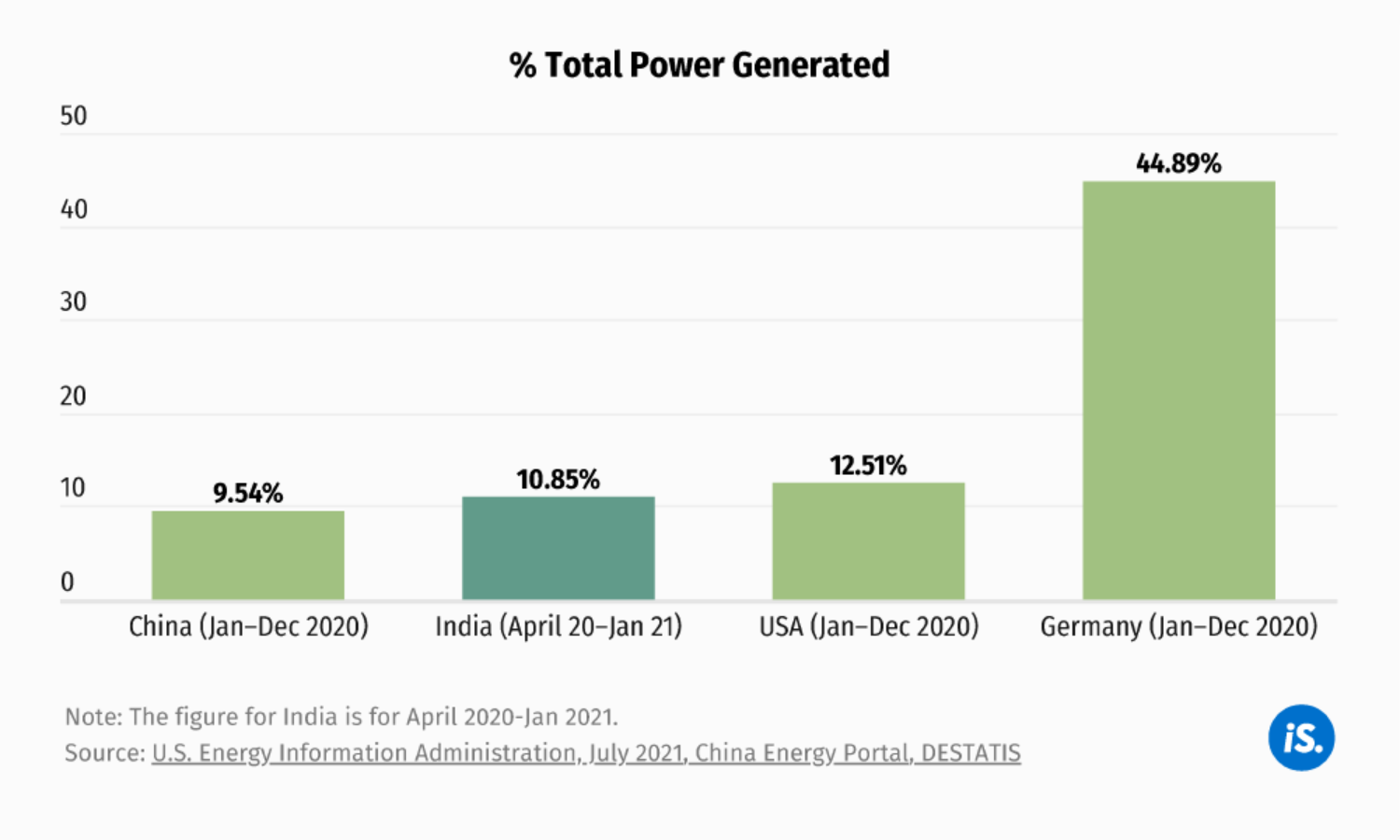How India Stacks Up Vis-a-Vis Other Countries In Renewables
India has made rapid strides, but here's why it must set itself more ambitious targets

In terms of RE generation as a proportion of total power generated, India (10.8%; April 20 - Jan 21) is now comparable with the US (12.5%; Jan - Dec 2020), and China (9.5%; Jan - Dec 2020), but pales when compared with Germany (44.9%; Jan - Dec 2020).
An important distinction to make when understanding RE power is that while India's installed capacity is 24.5% of its total electricity generation capacity, RE's share in total power generated is only 10.85%. This is because while thermal plants run 24X7, RE plants (especially wind and solar) are dependent on weather conditions -- wind speeds or sunlight. And, of course, solar projects generate power only during the daytime. In industry parlance, this is referred to as 'capacity utilisation factor' or CUF. Thus, while coal-based plants have an annual CUF of 85-90%, wind and solar projects average around 20%.
This means that for more RE to be consumed, capacity to the multiple of 5x must be installed. This makes clear the scale of the challenge should India set itself more ambitious targets; globally, pressure is building to announce 'net zero' targets.
Data visuals designed by Gokulananda Nandan and Gulal Salil.
Here are other DataViz of the series:
Renewable Energy: How India Is Faring
How Renewable Energy Became Price-Competitive With Conventional Power
How Renewable Energy Took Off In India
We welcome feedback. Please write to respond@indiaspend.org. We reserve the right to edit responses for language and grammar.


